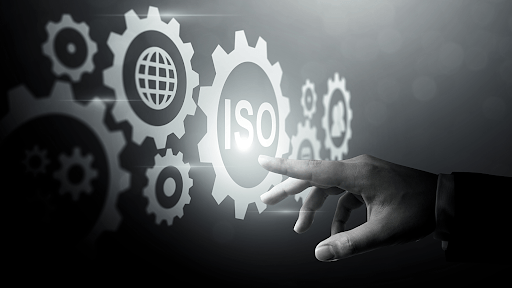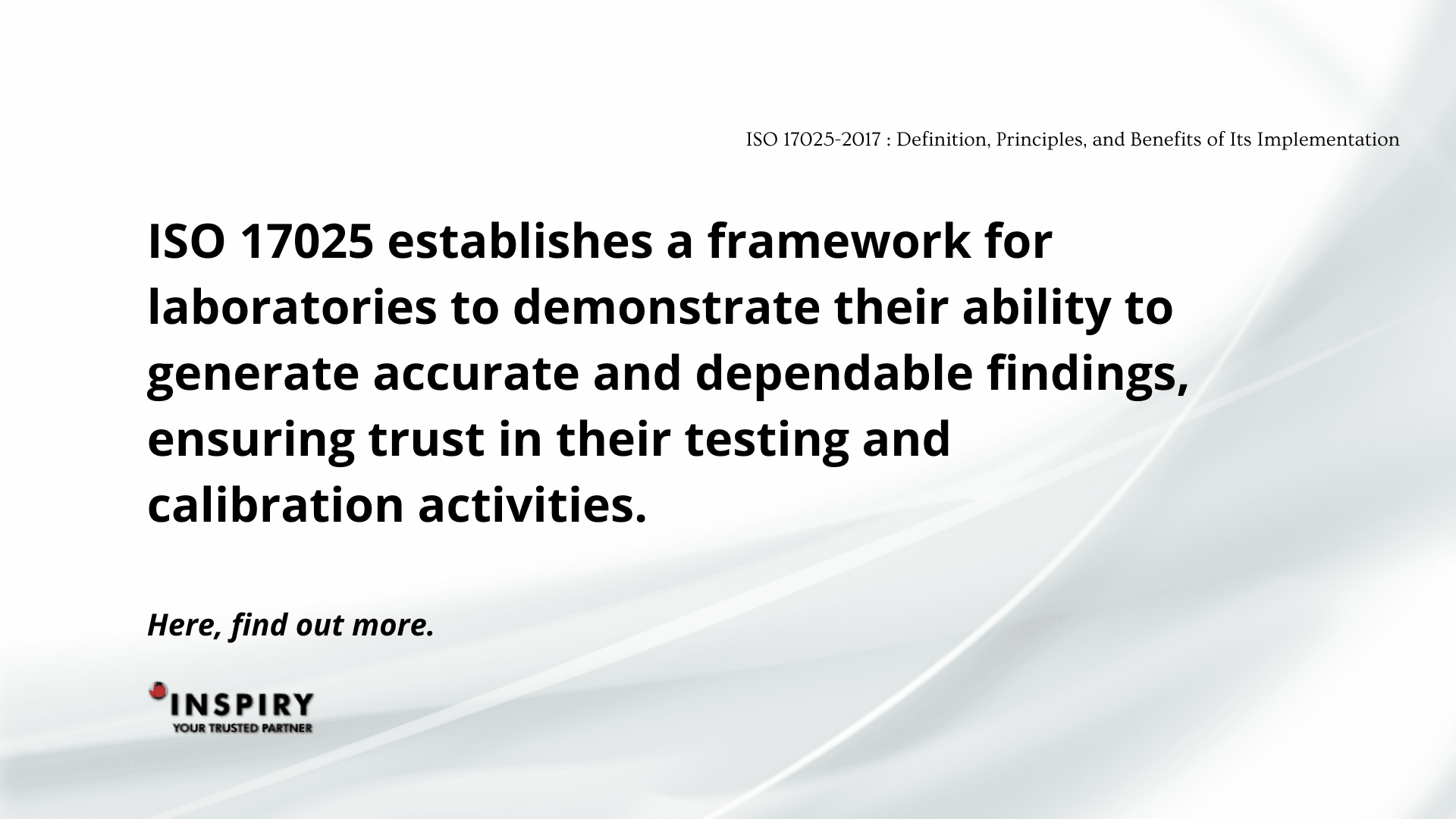
Blog Detail
ISO 17025: Definition, Principles, and Benefits of Its Implementation

ISO 17025:2017 is an international standard that specifies the general standards for testing and calibration laboratories' competence. Testing laboratories determine the properties of an item of interest for conformity evaluation. As an example, consider testing a pharmaceutical product (the item of interest) to verify if the amount of metal it contains is within the legal limits (compliance). Calibration laboratories, on the other hand, compare a measurement device with unknown accuracy against one with known accuracy. Calibration, for example, can be used to confirm that the scale at the pharmaceutical manufacturing company (the unknown) appropriately weighs the materials by comparing the readings throughout against certified mass items (the known).
ISO 17025:2017 establishes a framework for laboratories to demonstrate their ability to generate accurate and dependable findings, ensuring trust in their testing and calibration activities. The standard addresses numerous areas of laboratory operations, such as management, staff, buildings and equipment, testing and calibration procedures, quality assurance, and results reporting.
Five Main Requirements for ISO 17025:2017
General Requirements: This section addresses impartiality and confidentiality, two qualities critical for sustaining the trust and confidence that test and calibration consumers place in the facilities they utilize. Impartiality is a clause aimed to protect laboratory activities from conflicts of interest, prejudice, favoritism, and bias, ensuring the validity of test or calibration results. It emphasizes the role of laboratory management in identifying and safeguarding impartiality, involving quality awareness through policies, communication channels, and monitoring. Risks to impartiality must be considered and documented, with a responsible person taking immediate action to minimize risks. On the other hand, The confidentiality clause establishes legally binding obligations to both internal and external parties, assuring conformity with ISO 17025:2017 requirements as well as national and international legislation. Personnel, management, external bodies, contractors, and other parties are required to maintain information confidential, including electronic storage and transfers.
Structural Requirements: Despite being one of the smallest sections, the standard contains particular organizational requirements that are critical as the foundation for achieving the aim of the ISO 17025:2017 management system. This is because test or calibration reports are legally binding. To meet the laboratory's aims, laboratories require unbiased reporting lines and assigned roles (with necessary authority). This section explains a laboratory's essential organizational components, its scope of activity, and its dedication to an effective management system. It specifies that a certified laboratory must be a legal entity or a part of a legal body that is in charge of its testing and calibration activities. This section defines the responsibilities of management in an accredited laboratory, as well as their responsibilities to consumers, regulatory bodies, and organizations that give recognition. This further establishes the basic requirements for personnel, their authority, and the resources required to carry out their responsibilities.
Resource Requirements: The standard covers the criteria for laboratory employees, appropriate facilities, equipment, systems, and support services in this section. This section has six clauses that cover the laboratory's need for employees, facilities, equipment, systems, and support services to carry out its laboratory tasks.
Process Requirements: This section outlines standards for laboratory operational processes, including both management and technical needs. The approach, as with the other clauses, is to: establish processes and procedures to ensure requirements are met for each process requirement clause, as well as interrelated clauses in other sections (e.g., risk, improvement, non-conforming work) document the laboratory's requirements where mandatory for ISO 17025:2017 or necessary for the laboratory to ensure effective implementation and communicate clearly to personnel and other interested parties (e.g., customers). There are 11 clauses for ISO 17025:2017 includes Review of requests, tenders, and contracts, Selection, verification, and validation of methods, Sampling, Handling Test or calibration items, Technical Report, Evaluation Of Measurement Uncertainty, Ensuring The Validity Of Results, Reporting Results, Complaints, Nonconforming work, Control of data and information management.
Management Systems Requirements: The management requirements in this section are intended to guarantee that the overall structure of the management system is in place to support the laboratory's policies and objectives. It includes the management of documents, data, and information, as well as the performance evaluation and improvement activities of the management system.
What are the Benefits?
Accreditation to ISO 17025:2017 ensures a laboratory's reliability, competence, and traceability to the International System of Units (SI). This boosts customer confidence and promotes a proactive risk-based business culture. A culture of risk-based thinking drives cost-effective operations and evidence-based decision-making. Test and calibration methods must be reviewed and audited to ensure the latest technology and documentation. Third-party accreditation provides a sense of professionalism and pride, fostering a professional environment for the entire organization.
ISO 17025:2017 implementation necessitates a major effort from the laboratory, including rigorous documentation, training, and process improvement. Many laboratories seek the assistance of ISO 17025:2017 consultants or professionals to guide them through the implementation and accreditation process. Do you want to get ISO 17025:2017 certification? Contact us!
